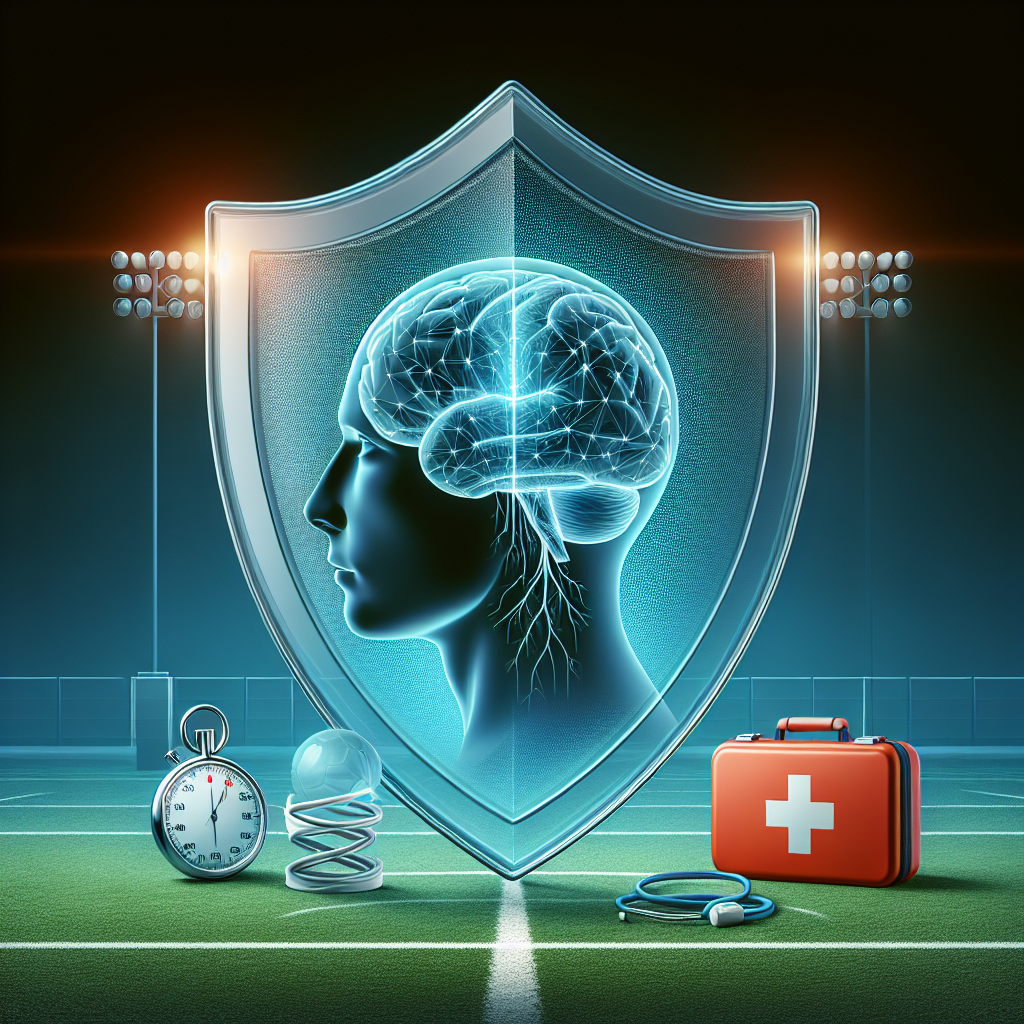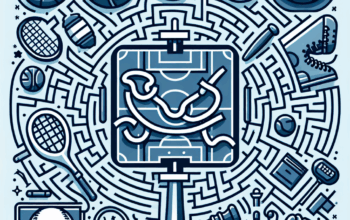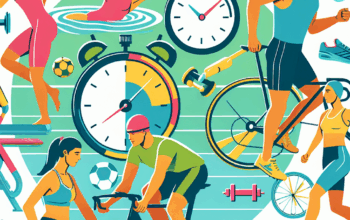Understanding Concussions: Symptoms and Management in Sports
In recent years, awareness of sports-related concussions has markedly increased, highlighting the critical need for understanding concussions: symptoms and management in sports. As athletes continue to push their physical limits, the risks of head injuries remain a significant concern for players, coaches, and medical personnel alike. This article delves into the intricacies of concussions, providing comprehensive insights on symptoms, management strategies, prevention methods, and the new advancements in concussion protocols as of 2025.
The Science Behind Concussions in Sports
A concussion is a type of traumatic brain injury (TBI) typically caused by a blow to the head, a bump, or a jolt that disrupts the normal functioning of the brain. Specifically, in sports, these injuries can occur in numerous activities ranging from football and soccer to skateboarding and martial arts. When an individual experiences a concussion, it can lead to a series of physical, cognitive, and emotional symptoms that affect their performance and overall well-being. The severity of the injury often varies, meaning that some athletes may only experience mild symptoms, while others could face life-altering complications.
Understanding concussions involves recognizing the symptoms that manifest following the injury. Common symptoms include headaches, dizziness, confusion, memory loss, visual disturbances, and balance issues. In severe cases, athletes may experience prolonged unconsciousness or prolonged confusion. Importantly, the timeline for symptoms can vary; some may appear immediately after the injury, while others can develop hours or even days later, underscoring the necessity for vigilance in monitoring one’s condition post-injury.
Recognizing Symptoms of Concussions in Athletes
Recognizing the symptoms of concussions is paramount for timely intervention and treatment. The symptoms can be categorized into three main domains: physical, cognitive, and emotional. Physically, athletes may experience headaches, nausea, vomiting, fatigue, sleep disturbances, and overall dizziness. These symptoms can significantly hamper an athlete’s performance and require immediate attention to avoid further injury and complications.
Cognitive and emotional symptoms, often overlooked, are equally critical. An athlete may struggle with concentration, experience memory gaps, become easily confused, or show signs of irritability and anxiety. Coaches, trainers, and teammates must be educated to notice these behaviors, as they might be subtle but indicate a concussion. Immediate recognition and response are crucial for the athlete’s recovery and for preventing additional injuries, which can sometimes occur if the athlete returns to play too soon.
Management Strategies for Concussions in Sports
Effective management of concussions is vital for ensuring the health and safety of athletes. As of 2025, the consensus in medical communities is to adopt a multifaceted approach to managing concussions, focusing on both physical and cognitive rest immediately following the injury. This approach includes not only a break from play but also restrictions on screens, schoolwork, and other cognitive tasks that could exacerbate symptoms. It is essential for athletes to follow a gradual return-to-play protocol, monitored by healthcare professionals trained in concussion management.
Following an initial period of rest, athletes can begin a stepwise return-to-play protocol, which aims to gradually reintroduce physical activities. This protocol often includes light aerobic exercises, followed by sport-specific drills, non-contact training, and finally, a return to full contact practice. It is critical throughout this process to continuously assess symptoms; if any symptoms return during these steps, the athlete must revert to the previous step until fully symptom-free. This systematic approach outlines a clear path to recovery while ensuring that the athlete’s health remains the primary focus.
In addition to physical and cognitive management strategies, the psychological impact of a concussion should not be neglected. Mental health resources such as counseling or therapy may be beneficial for athletes struggling with anxiety or depression following a concussion. Addressing these psychological aspects can promote a more holistic recovery and help athletes regain confidence in their abilities.
Preventing Concussions in Sports
Preventing concussions in sports is a paramount concern for athletes, coaches, and parents alike. Increased awareness has led to a focus on enhancing safety practices at all levels of play. Improved training and education about safe play techniques are fundamental in reducing the likelihood of concussions. Coaches should prioritize teaching athletes proper tackling techniques in sports like football, where head injuries are prevalent, emphasizing that safety should always come first.
Moreover, protective gear has improved significantly in the last few years. Helmets and headgear are now designed with advanced technology to absorb impact and mitigate the risk of concussions. While no equipment can entirely eliminate the risk, the continuous evolution of safety gear, alongside rule changes and the promotion of safe play, has shown promise in reducing concussion rates in organized sports. Initiatives aimed at educating parents and players about the seriousness of head injuries also play a critical role in prevention.
Lastly, creating a culture that prioritizes health over competition at all levels can yield significant improvements in concussion management and prevention. This involves advocating for policies that ensure injuries are taken seriously and that players are given the necessary time to recover fully before returning to contact sports. Sports organizations, schools, and communities must be united in fostering such a culture to keep athletes safe.
New Developments in Concussion Research and Protocols
As we move forward into 2025, ongoing research continues to revolutionize our understanding of concussions. Recent studies have shed light on the long-term effects of repeated brain injuries, emphasizing the need for more stringent protocols. Research reveals that even mild concussions can lead to chronic traumatic encephalopathy (CTE), a degenerative brain disease, highlighting the importance of recognizing and treating concussions promptly and effectively.
Innovative technologies have emerged to assist in the accurate assessment of concussions. Neuroimaging techniques such as advanced MRI scans can identify subtle changes in the brain following injury, providing invaluable insights into the effects of concussions on brain function. Furthermore, the development of mobile apps and software that help monitor symptoms and recovery times has made tracking an athlete’s post-concussion health more manageable for both athletes and medical professionals.
Organizations like the CDC and NFL have taken steps to improve protocols for managing concussions in sports. Mandatory baseline testing before the season can help identify changes in an athlete’s cognitive function following a concussion, allowing for better-informed decisions about their return to play. These steps reflect a broader shift towards prioritizing athlete safety and demonstrate a growing commitment to developing scientifically informed, evidence-based concussion management protocols.
The Future of Concussion Management in Sports
The future of concussion management in sports looks promising, with an increasing emphasis on education, prevention, and research-driven practices. As awareness of concussions continues to rise, it is imperative that educational programs for coaches, players, and parents become standardized across all levels of athletics. Initiatives aimed at fostering open dialogues about injuries will encourage reporting and reduce the stigma surrounding concussion-related difficulties.
Moreover, fitness technology—a burgeoning field—may also contribute to the future landscape of concussion management. Wearable devices equipped with sensors can potentially monitor impacts during practice and games, alerting coaches and medical staff when an athlete has sustained a significant hit. This proactive approach could revolutionize how we approach concussion awareness and prompt timely medical interventions.
Advancing research is crucial for developing better treatment modalities and alleviating long-term effects on athletes’ cognitive functions. Collaborations among sports organizations, academic institutions, and healthcare providers are essential to drive this research forward. By fostering a collaborative research environment, we can expedite the development of effective interventions and preventative measures, ensuring the wellbeing of athletes remains the highest priority.
Conclusion
Understanding concussions: symptoms and management in sports is an ever-evolving focus within athletics, where the health and safety of athletes take precedence. Recognizing the symptoms, implementing effective management strategies, prioritizing prevention, and staying informed about new developments are all crucial in addressing this pressing issue. By fostering a culture of awareness and implementing science-backed practices, we can help our athletes create a safer environment in their sports, minimizing the risks associated with concussions.
FAQs
What is a concussion?
A concussion is a form of traumatic brain injury caused by a blow to the head or a jolt that disrupts normal brain function. Symptoms can vary significantly among individuals.
What are the symptoms of a concussion?
Symptoms may include headaches, confusion, dizziness, balance issues, fatigue, difficulty concentrating, and emotional changes such as irritability or anxiety.
How are concussions treated?
Concussions are managed through a combination of physical and cognitive rest, followed by a gradual return-to-play protocol. Medical professionals should monitor recovery closely.
Can concussions be prevented?
While not all concussions can be prevented, their risk can be reduced through education about safe play techniques, improved protective equipment, and creating a culture that emphasizes safety.
What is the long-term impact of multiple concussions?
Repeated concussions can lead to long-term effects, including chronic traumatic encephalopathy (CTE), which can affect cognitive function, mood, and behavior over time. This underscores the need for careful monitoring and management.












